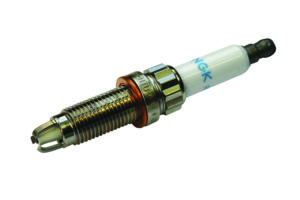A spark plug replacement guide for BMW N43 and N53 engines from NGK UK Ltd.
According to statistics, more than 488,000 vehicles with the N43 and N53 engines are driving on European roads, which were fitted with the ZKBR7A-HTU NGK spark plugs as original equipment (OE).
It is likely that many UK and Ireland workshops have already had the opportunity to take a look at these engines, either under the bonnet of a BMW 1 series or under that of a 3, 5 or 6 model.
Technically, the spark plug is a semi-surface type spark plug with three ground electrodes and a 14mm bi-hex. To guarantee a reliable ignition, the spark plug comes with a projected spark position – the electrodes extend far into the combustion chamber.
Also, the semi-surface design prevents the accumulation of carbon deposits which are often associated with direct injection engines and guarantees reliable ignition by removing carbon deposits at the insulator tip even at temperature levels below the spark plug’s self-cleaning temperature.
Correct tool selection: a must when it comes to spark plug service replacement
As with any spark plug, the ZKBR7A-HTU needs to be changed from time to time. The original equipment (OE) identical aftermarket spark plug from NGK (stock no. 91785), replaces BMW part nos. 12120038349 and 755001102.
Unlike most engines, the spark plugs position in the N43 and N53 is angled in the spark plug tunnel by more than five degrees. A look into the spark plug shaft does not reveal this special design to technicians and, unaware of this particular construction, the mechanic might mistakenly use a standard solid bi-hex (12 point) socket, instead of the necessary bi-hex socket with an integral articulated joint.
Due to the angled position, a conventional solid spark plug socket will not fit squarely on the spark plug. The force required to loosen or tighten the spark plug means that the risk of spark plug damage is high. This is because force is applied to the fragile ceramic insulator of the spark plug, which can result in hairline cracks and breakage. Sometimes cracking cannot be seen as they are out of sight beneath the metal shell of the spark plug. Ignition problems and an early failure of the spark plug are inevitable, resulting in costly diagnostic time.
When replacing spark plugs on the N43 and N53 engines, be sure to use a quality articulated bi-hex socket, available from specialist tool manufacturers – and as with any spark plug, it should be used in conjunction with a torque wrench upon installation (set to 15 – 20 Nm for this 12mm diameter thread plug).











